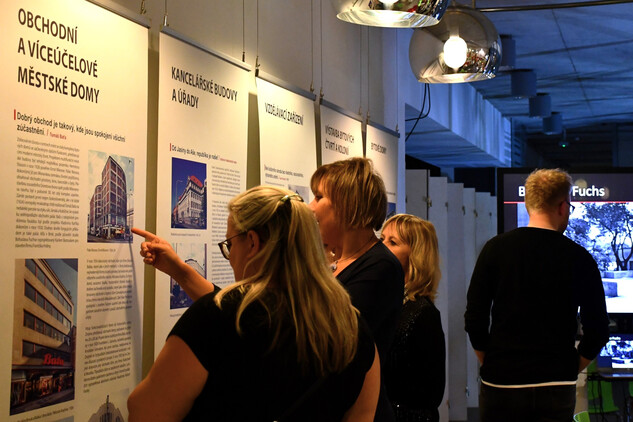The exhibition Architecture in the Service of Interwar Czechoslovakia is on display in Poznan

Brno, Brno's interwar heritage sites, the National Heritage Institute and Villa Stiassni are presented in the form of an exhibition in Poznan, Poland. The exhibition Architecture in the Service of the Interwar Czechoslovakia - Brno and South Moravia opened here on Tuesday 15 October and will be on display until the end of the year in the café of the city library (Biblioteka Raczyńskich) in Poznań.
The establishment of independent Czechoslovakia was a great event for Brno. From a provincial city of the monarchy, it became the provincial administrative centre of the new republic and this entailed the establishment of new political, economic, educational and judicial institutions. In April 1919, the so-called Greater Brno was created by annexing the previously independent towns of Královo Pole and Husovice and 21 other smaller surrounding municipalities. The resulting situation posed a challenge for architects and urban planners. It is not surprising that in 1919, in addition to the established German technology, a new Czech Technical University was founded, where architects such as Emil Králík, Jaroslav Syřiště and Jiří Kroha taught architecture. Important architects also worked at the building office, where Jindřich Kumpošt called Bohuslav Fuchs, the future leader of the Brno avant-garde. Ernst Wiesner returned to Brno from his studies with Friedrich Ohmann in Vienna, bringing with him the style of individualistic modernism, which in the 1920s astonished with its expressionist forms. These and other figures took on the task of developing the vacant plots between the original Brno and the adjacent villages, building new public buildings and providing adequate infrastructure. And thanks to their efforts, Brno gradually changed into the most modern city in Czechoslovakia. However, modern buildings were also built elsewhere in South Moravia. The most interesting ones are presented on sixteen exhibition panels with texts in Czech and Polish.
The individual panels represent famous villas, apartment buildings, schools, medical facilities, sports and spa buildings, department stores, banks, offices, churches and crematoria, industrial buildings, cafes and hotels and, of course, the Brno Exhibition Centre.
The opening of the exhibition, which was prepared by the Methodological Centre for Modern Architecture in Brno, took place on the occasion of the opening of the Days of Czech Culture in Poznań. Visitors can view the panels devoted to Brno modernism in the basement of the Poznań City Library over a cup of coffee; the exhibition will close at the end of 2024.






